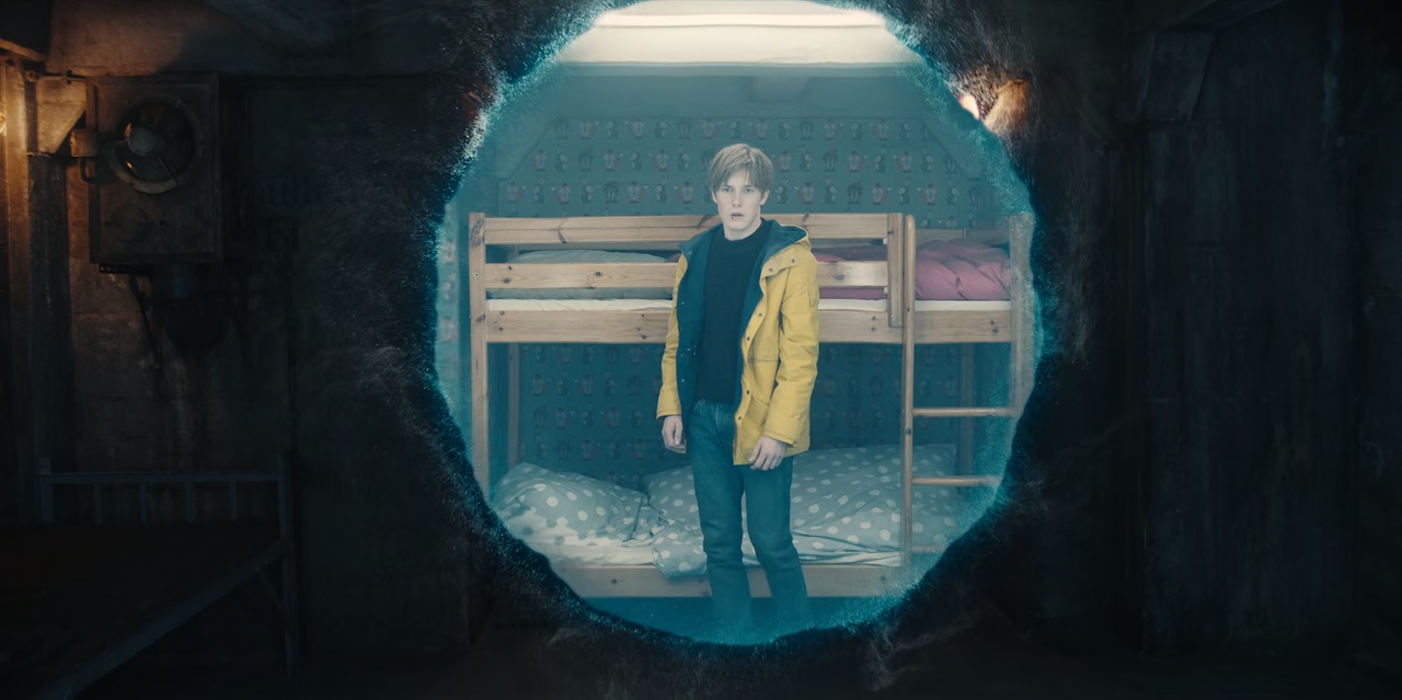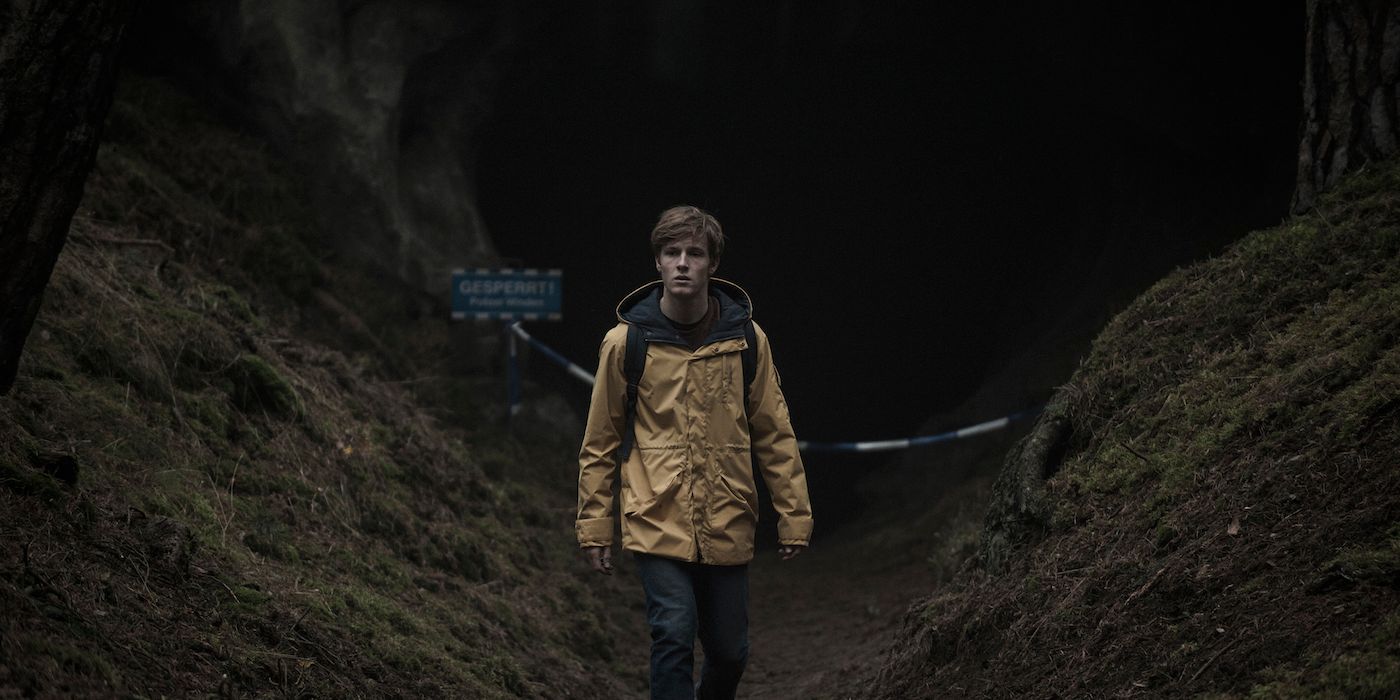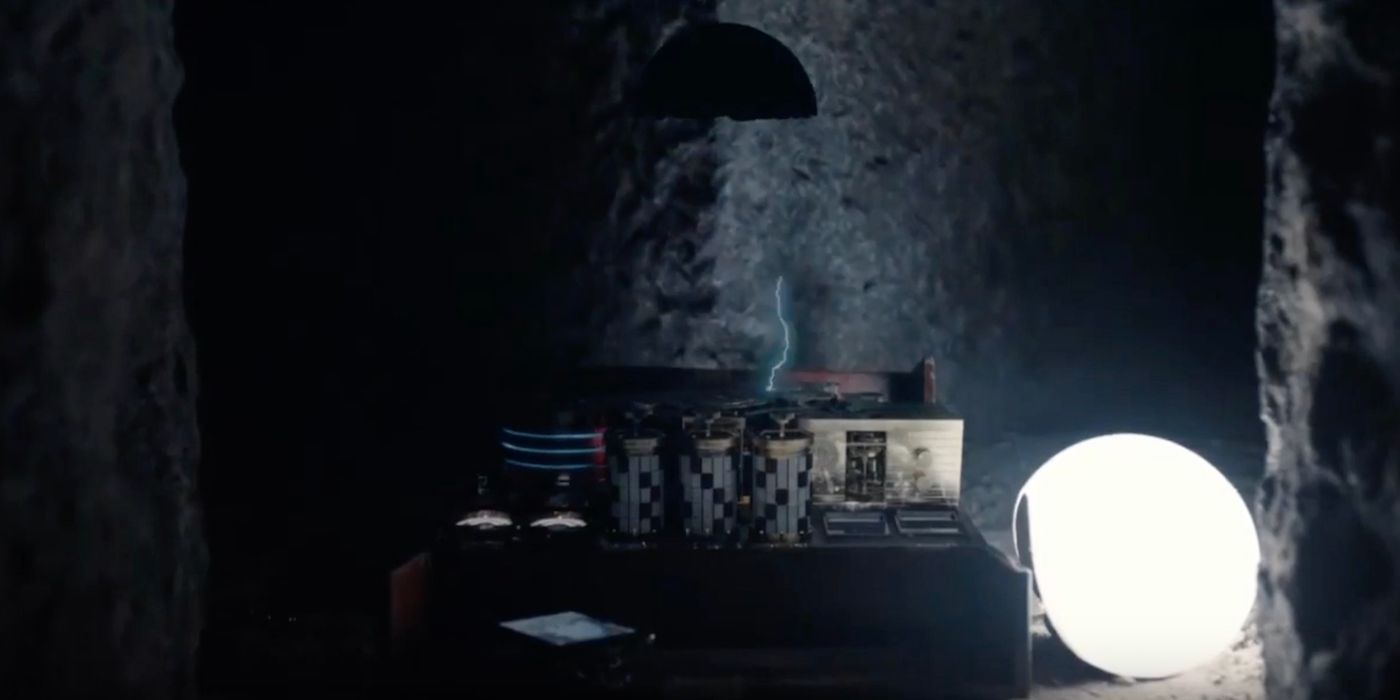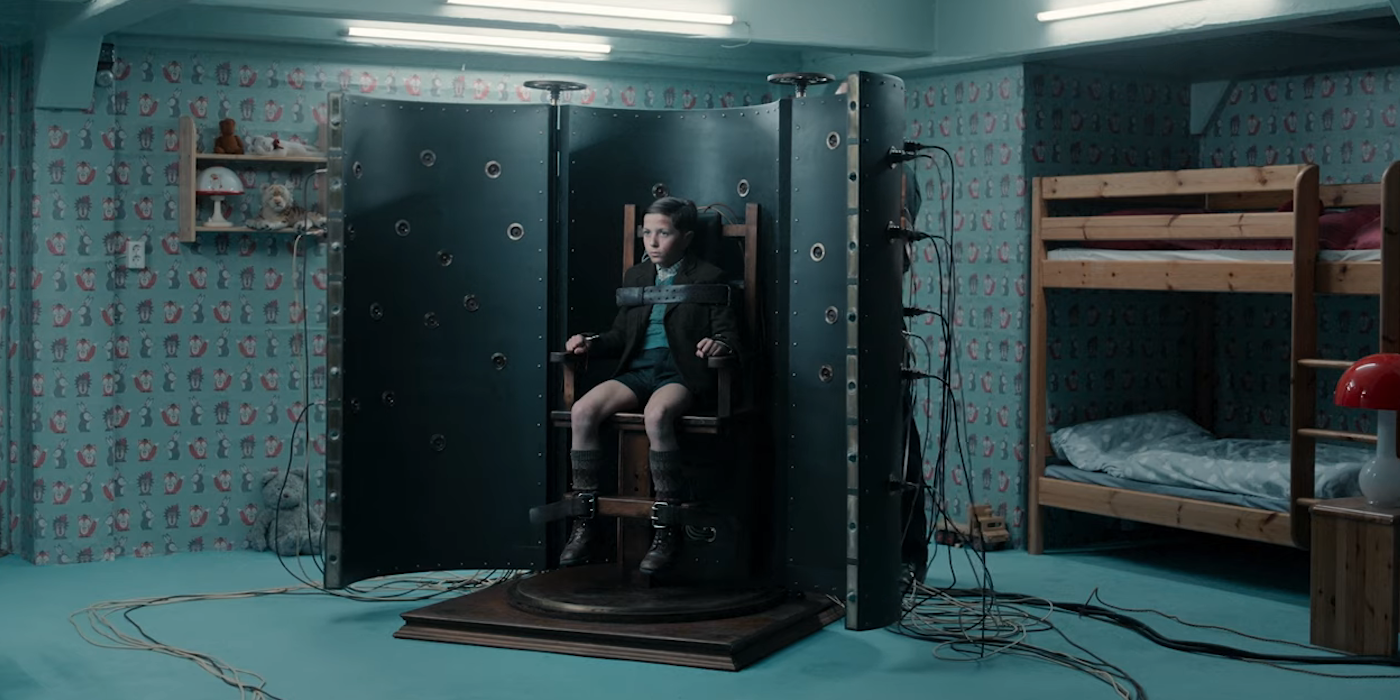Netflix's German sci-fi drama Dark relies on the mind-bending concept, "The beginning is the end, and the end is the beginning," a mantra that permeates the series as it focuses on how time travel has affected the small town of Winden. Season 1 kicks into high gear in 2019 with a kid, Mikkel, going missing at a cave in the nearby woods, leading to the mysterious Stranger offering clues to Jonas -- one of the teens involved in the incident -- to solve the case.
What ensues is Jonas discovering key families in Winden have been part of a closed time loop, all tied back to the suicide of Michael (Jonas' father), months before Mikkel's disappearance. With the Stranger's guidance, he decides to harness the temporal ability of the cave to rescue Mikkel, figure out his own past and set things right. However, there are a few other time travel methods in the show, so let's break them all down in detail.
THE TEMPORAL CAVE
The main plot tool for time travel is, as mentioned, this haunting cave in Winden's forest. The Winden Nuclear Facility covered up a disaster in 1986, in which a leak spewed radiation that affected the main tunnel connecting the compound to the cave. As a result of the unique nuclear material the Germans were experimenting on in the wake of Chernobyl, a wormhole was inadvertently created in the cave.
RELATED: Dark: The Apocalypse Can't Be Stopped in Season 2 Trailer
Certain mini-tunnels in the cave turned into "doors" that led to different timelines. However, each passageway offered the user the ability to travel forward or backward 33 years in time according to which one he/she took. The show hints this is also linked to a cosmic alignment that has supernatural ties to numbers such as "33" and "66," figures the series' occultists believe have a deeper meaning as to why folks can time-slide.
The entire cave becomes active every 33 years when the same stars align, which means the cave is rendered inert after this period. To traverse these pathways, users like Jonas and the Stranger have created a network of strings to guide them along their desired route. In the season finale, these secrets were revealed by the Stranger, who turned out to be Jonas from a dystopian future. He had to provide insight to his younger self on how the cave worked before plunging the teen forward to 2052, putting him on the path to becoming this Stranger.
THE TIME BOX
The Stranger's main mode of time-sliding, however, comes via the Box, although it's not clarified if this Box can be activated at any time or if it's just during the activity period of the cave. As for its design, it basically looks like the inside of a clock with old-school gears. We first get insight into its inner-workings when the Stranger travels to meet H.G. Tannhaus, a clockmaker and engineer in 1953, and leaves him with the initial blueprints. At this point, the unsuspecting Tannhaus is caught off-guard by news he'll be the one to design the Box.
Using this knowledge, Tannhaus is able to perfect his old schematics and create the Box, which the Stranger will then get in the future, thus firming up the show's closed loop. Tannhaus also gets another version of the Box from Claudia (an old lady time-traveling with a Box just like the Stranger) so he can complete his design, which of course, is passed down to her years later as well. Tannhaus also receives a copy of "A Journey Through Time" from the Stranger -- a book he wrote decades later, which also guides him in finalizing this device. In other words, he gets his book from the future to help him with his Box in the past.
To complete the first working design of the Box, Tannhaus also used a cell phone brought from the future by Mikkel's dad, Ulrich, who used the cave in 2019 to try to find his kid, not realizing he was going to get stuck in 1953. The electromagnetic field from the phone, and lastly, radioactive material Claudia left with Tannhaus from 2019, would allow the clockmaker to create this portable wormhole generator. As for how it operates, it sucks you up into a black hole and transports you to wherever you set the timer in accordance with the 33-year rule. In short, everything Tannhaus would use to make this Box work in the past was based on material brought to him from the future.
NOAH'S 'ARK'
The main antagonist in Season 1 is Noah, the head priest of a mysterious occult group. He's the reason kids have gone missing from Winden in the past and why their dead bodies are popping up over three eras (1953, 1986 and 2019) near the cave. It turns out in 1986 he began using a torture chamber-esque time machine, strapping kids into it to conduct experiments in order to see how they'd traverse the timestream.
Sadly, this burnt their eyes out and threw their corpses through the temporal gateways uncontrollably, leaving Noah to log data he simply didn't understand because of his lack of a scientific background. However, he appears in all the timelines without having aged a day so it could be that he learned how to use the machine on himself, or secretly got his hands on a separate Box.
That said, we never really see how the technical aspects of the chamber function. It's hinted, though, that Noah's machine could be mystically powered as there's no radioactive fuel opening up a wormhole. Given the biblical passages tattooed on his back, and from his own beliefs about heaven and hell, it could be that his arcane machine actually uses the souls of children as its temporal fuel.
Created by Baran bo Odar and Jantje Friese, Dark stars Oliver Masucci, Karoline Eichhorn and Jördis Triebel. Season 2 arrives Friday on Netflix.




